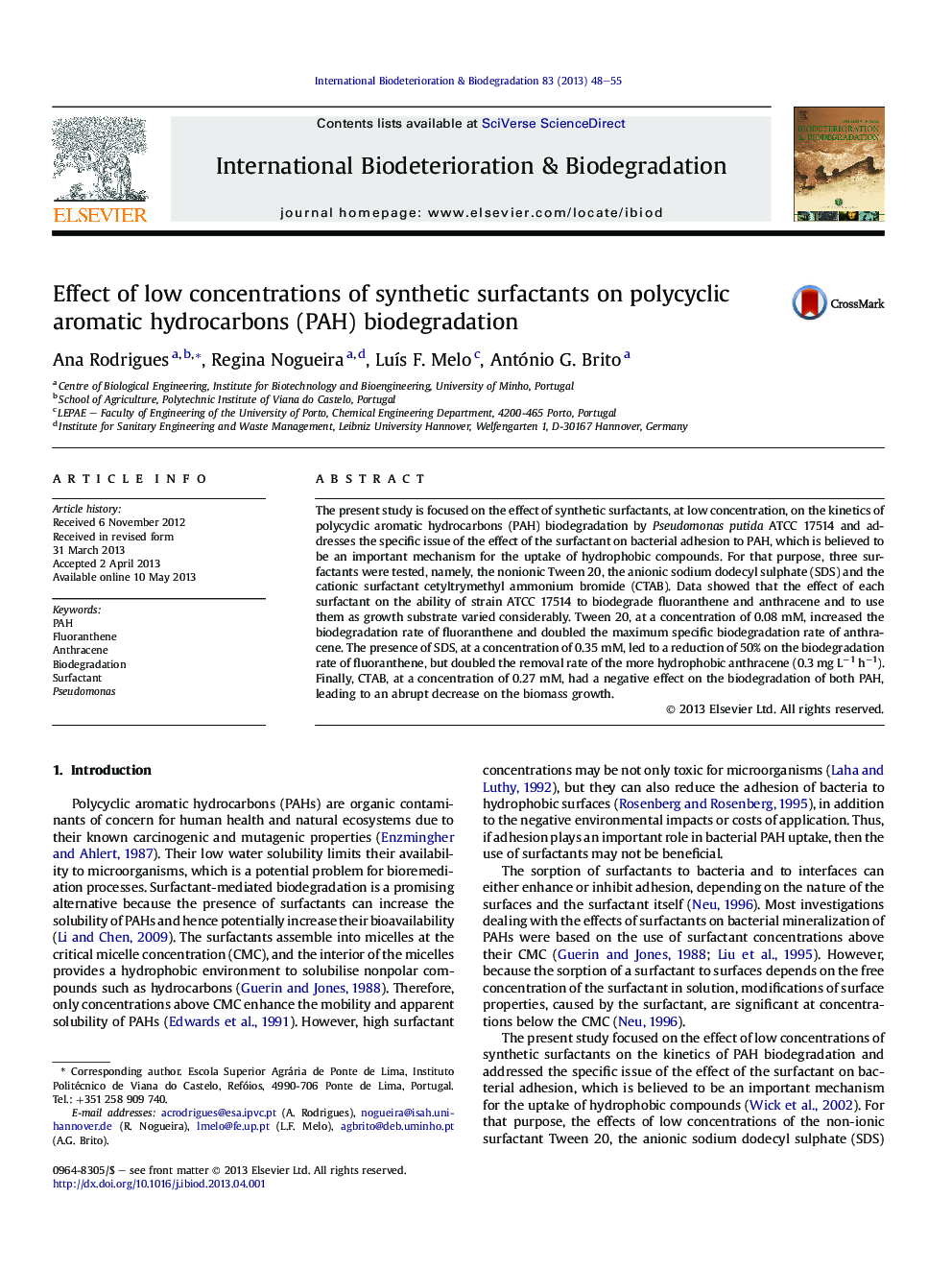| Article ID | Journal | Published Year | Pages | File Type |
|---|---|---|---|---|
| 4364881 | International Biodeterioration & Biodegradation | 2013 | 8 Pages |
•Low concentrations of surfactants can stimulate solid PAH biodegradation.•Biodegradation rate will depend on the combination microorganism/PAH/surfactant.•SDS had different effects on the biodegradation of fluoranthene and anthracene.•Tween 20 increased fluoranthene and anthracene removal rate by Pseudomonas putida.•CTAB had a negative effect on the degradation rate of cell-associated PAH.
The present study is focused on the effect of synthetic surfactants, at low concentration, on the kinetics of polycyclic aromatic hydrocarbons (PAH) biodegradation by Pseudomonas putida ATCC 17514 and addresses the specific issue of the effect of the surfactant on bacterial adhesion to PAH, which is believed to be an important mechanism for the uptake of hydrophobic compounds. For that purpose, three surfactants were tested, namely, the nonionic Tween 20, the anionic sodium dodecyl sulphate (SDS) and the cationic surfactant cetyltrymethyl ammonium bromide (CTAB). Data showed that the effect of each surfactant on the ability of strain ATCC 17514 to biodegrade fluoranthene and anthracene and to use them as growth substrate varied considerably. Tween 20, at a concentration of 0.08 mM, increased the biodegradation rate of fluoranthene and doubled the maximum specific biodegradation rate of anthracene. The presence of SDS, at a concentration of 0.35 mM, led to a reduction of 50% on the biodegradation rate of fluoranthene, but doubled the removal rate of the more hydrophobic anthracene (0.3 mg L−1 h−1). Finally, CTAB, at a concentration of 0.27 mM, had a negative effect on the biodegradation of both PAH, leading to an abrupt decrease on the biomass growth.
